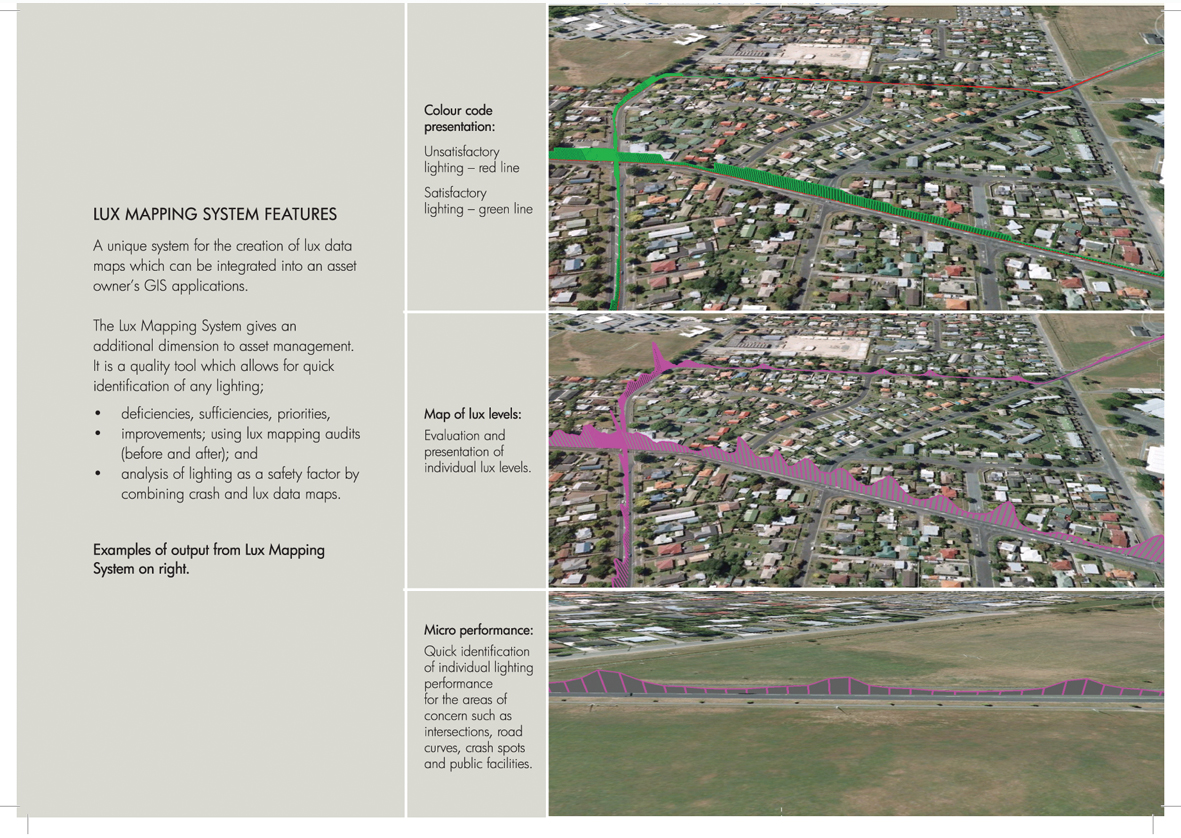Inadequate or insufficiently maintained street lighting contributes to poor road safety and area patronage, while encouraging crime and vandalism.
Appropriate use of street and public lighting can decrease or maximise the amount of electricity consumed, create a safer environment for vehicle and pedestrian traffic, as well as minimise greenhouse emissions and overall operating costs.
Our partnership with Odyssey Energy NZ allows us to efficiently and economically survey all your lighting assets to provide cheaper, greener and safer street lighting solutions.
Poor lighting contributes to poor road safety and crime.
Street lighting is frequently overlooked due to a lack of knowledge, or the mistaken belief that because a light is working, it is sufficient. Improvements in the overall lighting level can dramatically increase the overall 'ambience' of an area, which draws more people/patronage at night and decreases the risk to vehicle and pedestrian traffic, while also discouraging crime and vandalism.
Are you getting what you pay for?
You are charged a fixed amount for the size and number of lights on the lighting database, regardless of efficiency or operation of the lights. If lights are not working or have old lamps that are in need of replacement, you are paying for poor lighting. We can provide unbiased and repeatable assessments and inspections to determine whether the level of lighting is sufficient and whether contractors are conducting appropriate and effective maintenance.
Lighting Degradation
Typically, the three most common factors affecting performance of road lighting installations are:
- lamp failures or outages caused by failure of other equipment.
- reduction in light output due to lamp lumen depreciation (all lamps undergo a gradual reduction in light output over time and, in some situations the luminaire, whilst still using the full wattage, only produces minimal light for the street).
- reduction in light output due to accumulation of dirt on the transmitting or reflector surfaces of the luminaire and ageing of those surfaces.
This means setting a realistic routine maintenance period such that the installation continues to comply with the appropriate lighting standard for the full duration of its economic life. Consequently the most common maintenance activities today are: outage detection, luminaire cleaning and inspection, condition monitoring and vegetation management.
For inspections to be truly quantitative it is necessary to measure the lux level.
In contrast to traditional inspection methods, the Lux Mapping System utilised by Austraffic gives an accurate
and true performance measure of each light unit at night and has all the benefits of real-time measurements.
This is a unique system for the creation of lux data maps which allows the lighting owner to monitor quality and performance of lighting installations in a GIS environment.
Austraffic uses a computer based, vehicle mounted unit, designed to record illumination versus distance data at normal road speeds up to 100km/h making it ideal for the assessment of:
- Efficiency of lighting installations
- Night time road safety audits (identification of poorly lit road sections and combining crash and lux data maps)
- High definition video recording side-by-side with the Lux Meter survey to allow a visual review of infrastructure at night.
Austraffic also offers day time condition assessments (undertaken on site with Lux Survey results) allowing our technicians to offer some explanation in relation to sub-optimal laminar performance eg cracked lenses, trees obscuration, mast arm geometry defect etc.

Click here to download our Street Lighting Lux Mapping Surveys brochure.

